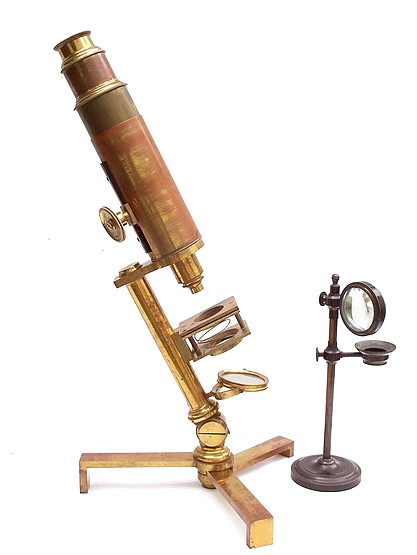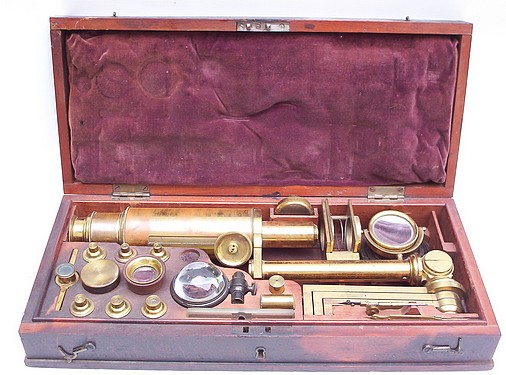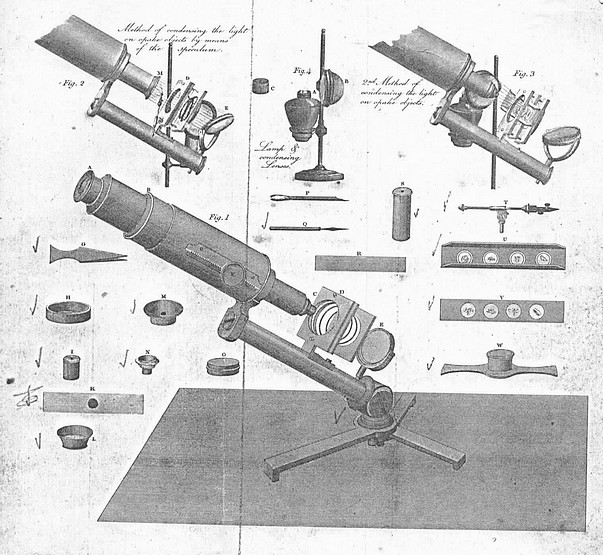

Among the accessories included with this microscope are six numbers objectives, a live box, a large round glass-bottomed trough, a stage and hand forceps, two talc boxes, a Lieberkuhn reflector stored in a brass box, a candle holder and a bullseye condenser mounted on a blackened brass stand, six bone slides with multiple specimens, three wooden slides with multiple transparent specimens, five wooden slides with multiple opaque specimens, two glass slides with one having a black disk attached.
The following is an excerpt from A Description of the New Improved Compound Microscope for Opake and Transparent Objects:
"This Micioscope is very simple in its construction, and will be found much easier to manage than any other compound Microscope in use. Opake and transparent objects, of any size from 3/8 of an inch diameter to the most minute animalcule, are seen either by day or night, very brilliant and distinct, in a field of view, nine inches in diameter, and magnified according to the magnifier used, from 700 to 90,000 times. The apparatus for confining and enlightening the object is very effective, and contrivrd so as to give as little trouble as possible. The observer can also be seated in the most convenient position, as the Microscope can be inclined to any angle."
Although unsigned, this microscope is of the type sold by Philip Carpenter (1776-1833) located at 24 Regent Street, London and later, after the death of Philip, by Carpenter (Mary) & Westley, London. See this essay about the firm.
